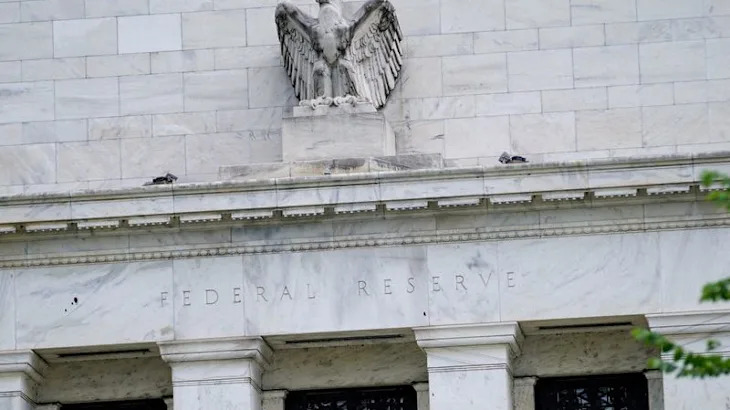(Bloomberg) -- Mexico’s economy posted the first quarterly contraction since 2021, shrinking much more than expected on weaker domestic demand and uncertainty over tariffs by the US, the country’s top trade partner.
Gross domestic product fell 0.6% in the fourth quarter, more than all forecasts in a Bloomberg survey of economists that had a -0.2% median estimate. From a year ago, GDP expanded 0.6%, below the 1% median projection, according to preliminary data published Thursday by the national statistics institute.
For full-year 2024, GDP rose 1.5%. Mexico’s Deputy Finance Minister Edgar Amador Zamora later Thursday attributed much of the last-quarter downturn to drought and climate change that weighed on manufacturing and spurred the agriculture sector’s worst performance in a quarter-century.
“This performance doesn’t imply the Mexican economy is in a recession or that it will enter into one,” Amador said at a Finance Ministry news conference. More than half the contraction in the fourth quarter data “is explained by the poor performance of the primary sector.”
Latin America’s second-biggest economy is widely expected to slow for a fourth consecutive year in 2025 amid government retrenchment and tight fiscal conditions coupled with concern over policy direction in both Mexico and the US. Mexico’s President Claudia Sheinbaum — who started her term in October — is continuing to pledge strong local demand, while the threat of US tariffs on Mexico’s exports rattles markets and halts investments.
What Bloomberg Economics Says
“A quarterly decline in Mexico GDP at the end of 2024 raises the risk of a recession in 2025 as domestic demand quickly loses momentum. US trade uncertainty, nationalist government policies and growing fiscal constraints are still drags.”
— Felipe Hernandez, Latin America economist
The agriculture sector showed an 8.9% quarterly decline during the period, while manufacturing fell 1.2% and services grew 0.2%, according to the data.
“It’s not reflecting a recession in Mexico, because the decline is not across the board and doesn’t extend to the services sector,” said Gabriela Siller, director of economic analysis at Grupo Financiero Base. “In the first year of a new government there’s always a deceleration, so we’re projecting that this year economic growth will be 0.8%. If the Mexican economy does truly well, it could be 1.2%.”
Amador declined to say what the effect of US tariffs could be on the Mexican economy given the lack of specifics about future US policy.
Challenging Year
Most Mexico-watchers had long projected a challenging year for the economy given still-high borrowing costs and concerns that the arrival of companies in the country — through a practice known as “nearshoring” — had not happened at the explosive pace some predicted.
More recent developments, such as the election of US President Donald Trump, have pressured the exchange rate and now pose upside risks to inflation while threatening the central bank’s current easing cycle.
Banco de Mexico Governor Victoria Rodriguez said recently that the bank could accelerate the pace of easing in the year’s first policy meetings, which start Feb. 6, following a string of quarter-point cuts.
Trump has asked for Mexico to take greater action to stop the flow of drugs such as fentanyl and also undocumented migrants to the US. If not, he’s threatened to impose a 25% tariff on Mexico, which complicates the central bank’s forecasts.
“If they do implement tariffs, we’re clearly going to have a contraction — and a significant one — because the economy is already very weak,” said Andres Abadia, chief Latin America economist at Pantheon Macroeconomics.
In late August, Banxico, as the central bank is known, reduced its growth estimate for 2025 to 1.2% from 1.5%. Economists in the most recent Citi survey put their 2025 growth outlook at 1%. Inflation in the first two weeks of January slowed to 3.69% compared to the same period the year before, within the bank’s target range.
“The weak print further reinforces our view that Banxico is likely to cut 50bps on Feb. 6, if there are no tariffs imposed on Mexico on Feb. 1,” said Carlos Capistran, head of Canada and Mexico economics at Bank of America.
--With assistance from Rafael Gayol.
(Update with Finance Ministry analysis starting in third paragraph.)




